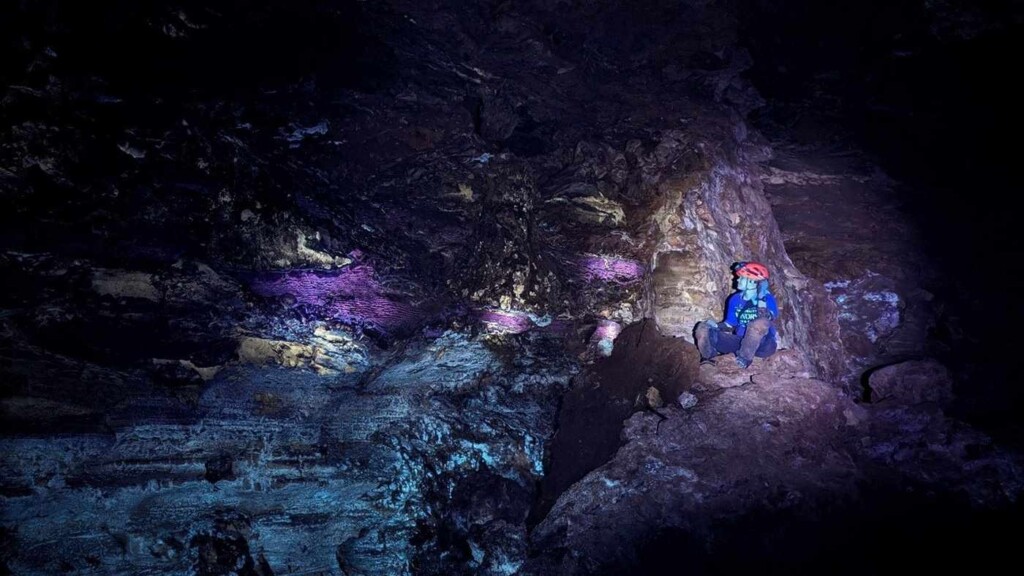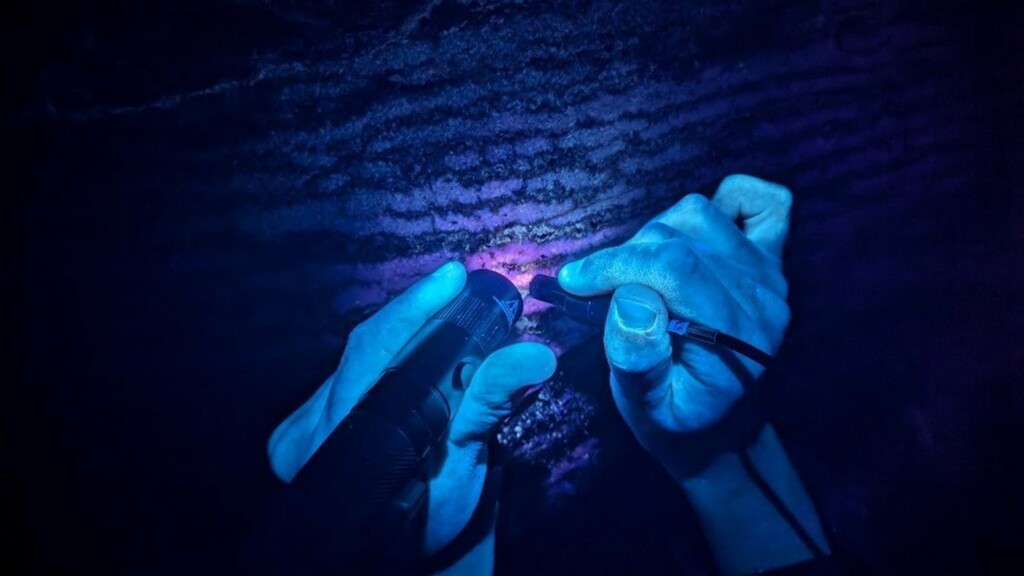
Fluorescent chambers inside South Dakota’s Wind Cave has given scientists a pathway into theorizing how life could exist on one of Jupiter’s moons.
In a cool, NASA-funded experiment, scientists shined an ultraviolet (UV) light around the rocks inside Wind Cave and found that chemicals fossilised within the rocks shine in brilliant hues of pink, blue, and green.
The goal is using the fluorescent features to understand how the caves formed and how life is supported in extreme environments, but the data may also reveal how life could persist underground on worlds such as on Jupiter’s icy moon Europa.
The team explained that the chemistry in the cave is likely similar to places such as Europa.
“The purpose of this project as a whole is to try to better understand the chemistry taking place underground that’s telling us about how life can be supported,” said Astrobiologist Professor Joshua Sebree, of the University of Northern Iowa.
As Sebree and his team began to venture hundreds of feet underground to investigate minerals and lifeforms in the cold, dark conditions, they used black lights to look at the minerals in the rocks within new areas of Wind Cave.
Sebree says that, under the black light, certain areas of the caves seemed to transform into something otherworldly as portions of the surrounding rocks shone in different colors thanks to impurities lodged within the Earth millions of years ago. The hues corresponded with different concentrations and types of organic or inorganic compounds.
“The walls just looked completely blank and devoid of anything interesting,” Sabree told his university press.
“But then, when we turned on the black lights, what used to be just a plain brown wall turned into a bright layer of fluorescent mineral that indicated where a pool of water used to be 10,000 or 20,000 years ago.”

The team collected the fluorescence spectra, which they say is like a fingerprint of the chemical makeup, from different surfaces using a portable spectrometer. That meant they could take the information with them while leaving the cave intact.
One of the team, Anna Van Der Weide, is using data collected during the fieldwork to build a publicly accessible inventory of spectra to help provide an additional layer of information to the traditional cave map and paint a more complete picture of its history and formation.
Wind Cave was just one of their destinations. In other caves across the United States, they mapped the rock formations, passages, streams and organisms they found. In the chilly Mystery Cave in Minnesota, they had to bury the spectrometer’s batteries in handwarmers to keep them from dying.
OTHER INTERPLANTERY HYPOTHESES: Lava Tubes and Water Frost Found on Mars Offer Double Opportunity in Search for Life
In other locations, the team had to squeeze through spaces less than a foot wide for hundreds of feet, sometimes losing a shoe in the process. But their efforts have revealed a wealth of information.
In Wind Cave, the team found that manganese-rich waters had carved out the cave and produced the striped zebra calcites within, which glowed pink under black light. The calcites grew underground, fed by the manganese-rich water.
MORE SPECULATION LIKE THIS: This Tiny Moon of Saturn Is the Smallest Case of a Subsurface Ocean Ever Found in the Solar System
Sebree believes that when the rocks shattered, since calcite is weaker than the limestone also comprising the cave, the calcite worked to expand the cave too.
Sebree now plans to investigate how similar, mineral-rich water may support life in the far reaches of the solar system. Scientists have previously predicted that the most likely place to look for signs of life on other worlds will be underground, since there, microbes would be sheltered from solar wind and other harmful effects of living with a minimal or negligable atmosphere.
SHARE This Wild Geology Lesson With Your Friends Who’d Appreciate It…
